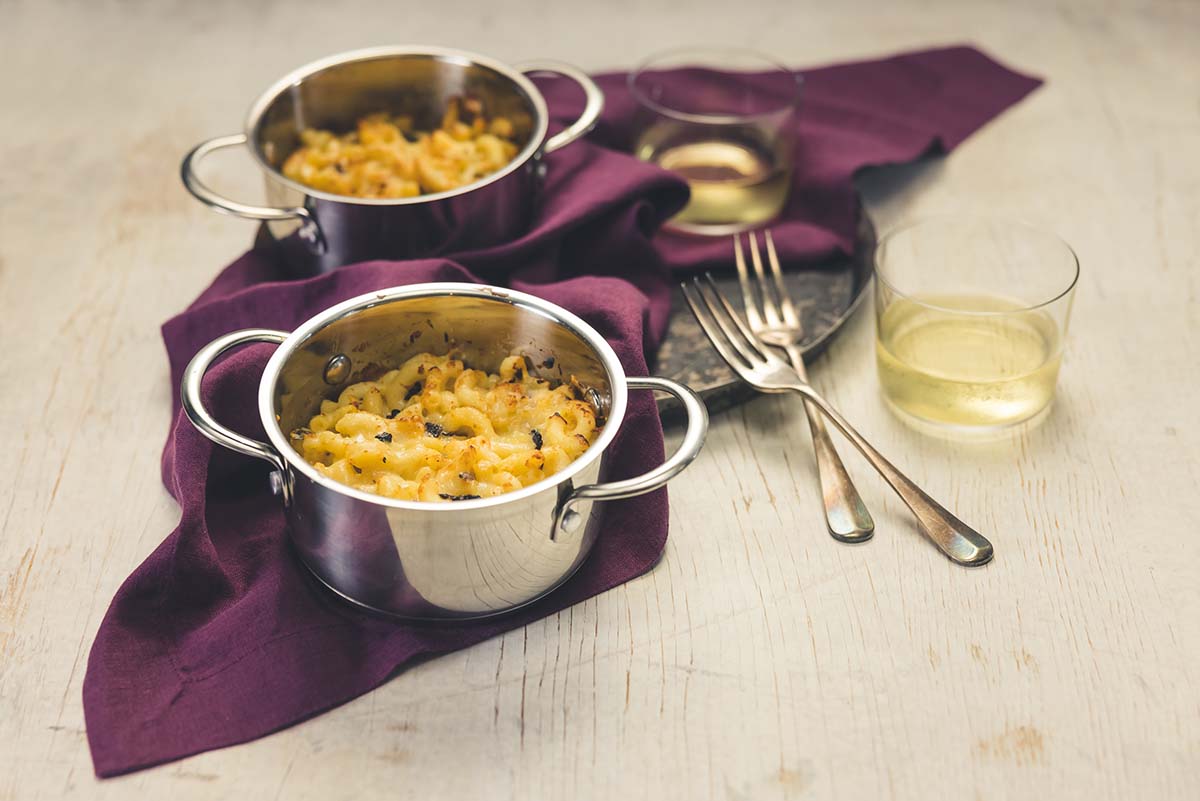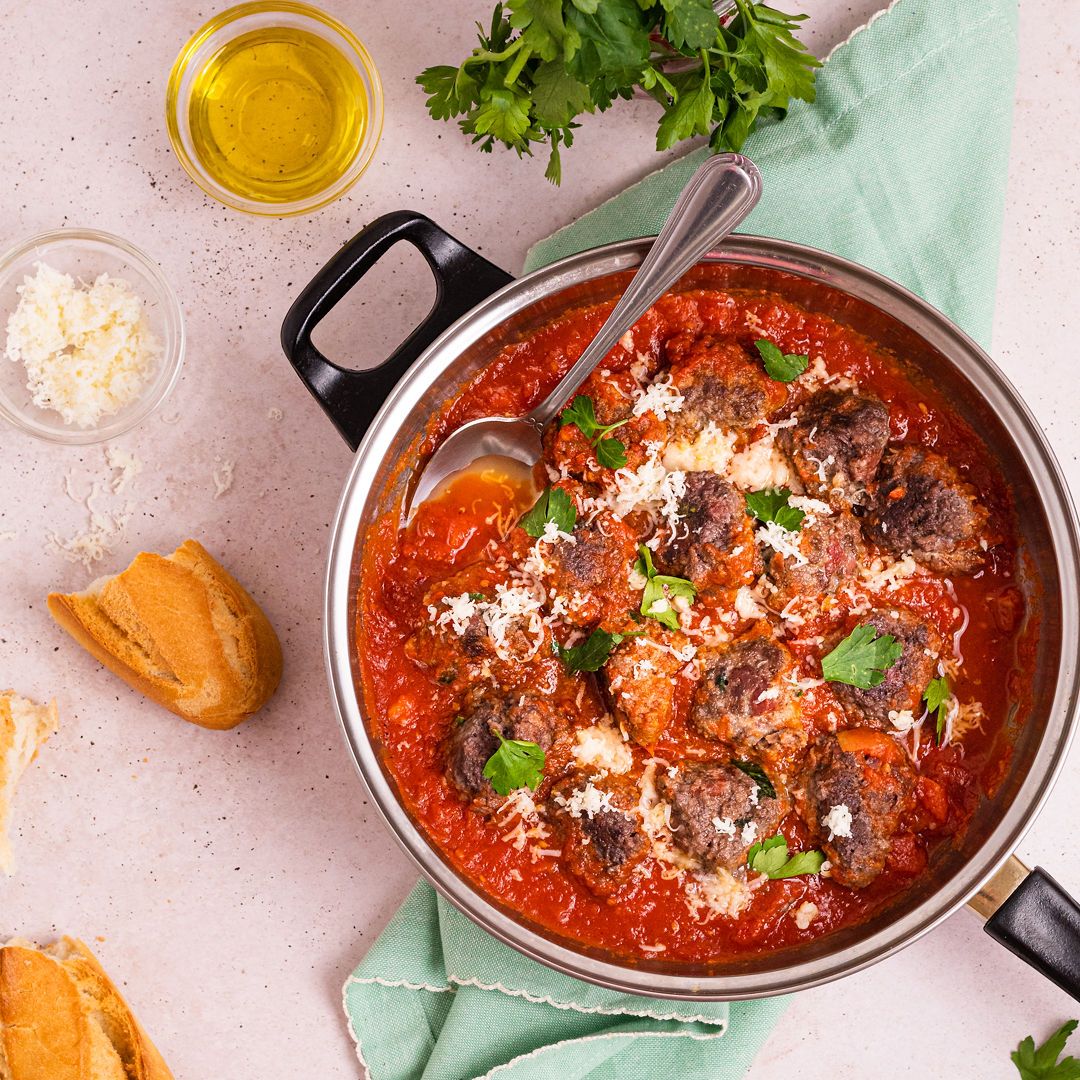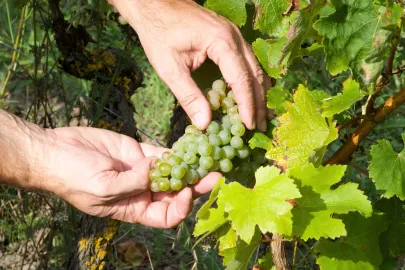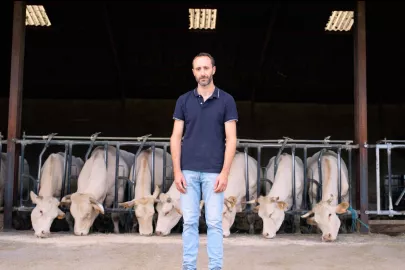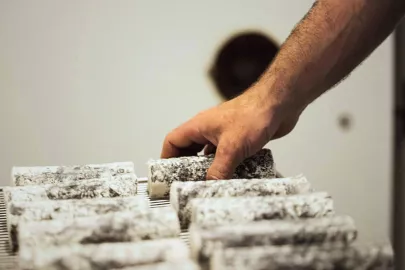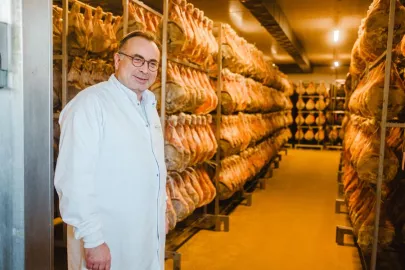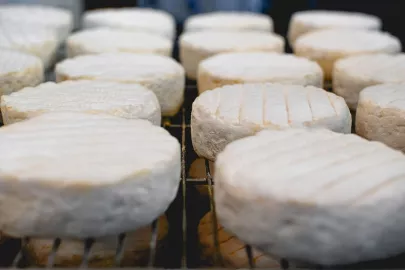Inside a former military fort, Fromageries Marcel Petite slowly ages Comté cheese in cool conditions so that cheese lovers from across the world can enjoy its full flavor. Add a glass of white wine from the Jura to complete the experience. We take an inside look at this “cathedral” of cheese, which is unique in more ways than one.
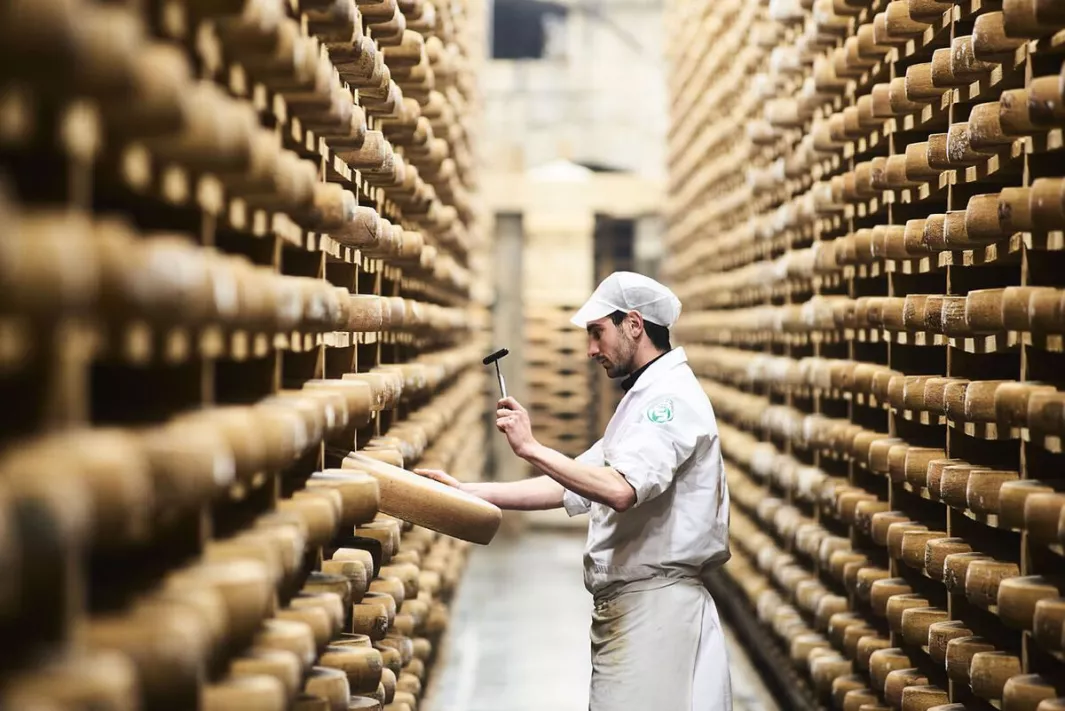
For five generations, the Petite family has honored the tradition of Comté, the star of Jura cheeses, whose history dates back much further, some 700 years.

© ©Louis-Laurent Grandadam
Ancestral heritage
During the Middle Ages and the centuries that followed, people settled on the high plateaus in the Jura, staying put even during the winter, and started to craft the characteristics of the Comté we know today. The farmers, who would make cheese for themselves, had the idea to pool their milk so that they could produce larger cooked, pressed cheeses with much longer storage life. The impressive size of today’s Comté cheese wheels reflects that legacy, as does the structure of the industry. Production is still a collective effort by small cooperatives, known as fruitières, which mix the milk collected each day, coagulate it using ferments, and then press, mold and unmold the cheese. The farmers produce the milk, the fruitières make the Comté, and the maturers mature it! That’s where Fromageries Marcel Petite, among others, comes in. In the 1960s, the grandfather of the current owners resisted the trend toward intensive agriculture, instead coming up with the brilliant idea to mature the cheese slowly, with flavorful results.

© ©Louis-Laurent Grandadam
A Comté cathedral
He put the plan into action by finding the ideal location, near Malbuisson in Haut-Doubs: Fort Saint-Antoine, perched atop a mountain at an altitude of nearly 1,100 meters (about 3,600 feet) at the end of a little road. Some 100,000 cheese wheels rest in this “cathedral” entirely dedicated to Comté maturation, a maze of awe-inspiring rooms kept at a steady temperature of 6 to 9°C (43 to 48°F). The approach has hardly changed since the early days. The Protected Designation of Origin, awarded in 1996, and the Controlled Designation of Origin, given in 1956, require at least four months of maturation. The engaging man in charge of the operation, Claude Querry, and his team allow at least ten months for this final key step.

© ©Louis-Laurent Grandadam
A matter of time
Time is what enables the cheese to develop its complex aromas. The cheese – mainly from milk from Montbéliarde cows – arrives at the former military fort from 35 of the 160 mountain fruitières in the region. Once inside, the wheels are placed on spruce boards, where they are brushed, rubbed, salted, and turned many times. The cheese is also tasted on a regular basis to gauge its maturity, a balance of bitter, sour, sweet and savory flavors. The tool used for this step is called a trier. The maturer taps on the cheese with the handle to hear how it sounds, and takes a sample of the core with the other end to judge the flavor and texture. It’s a process that takes years of experience to master. Along with a great deal of patience, which is clearly in abundance at Marcel Petite, which has quietly gained a stellar reputation and 900 customers in 40 countries! One last tiny detail: Fort Saint-Antoine is open to visitors! Cheese enthusiasts take note!
Cooking with Comté cheese
> Interested to learn more about French cheese? Check out our Beginner's Guide To French Cheese!
Contributor

Editor


